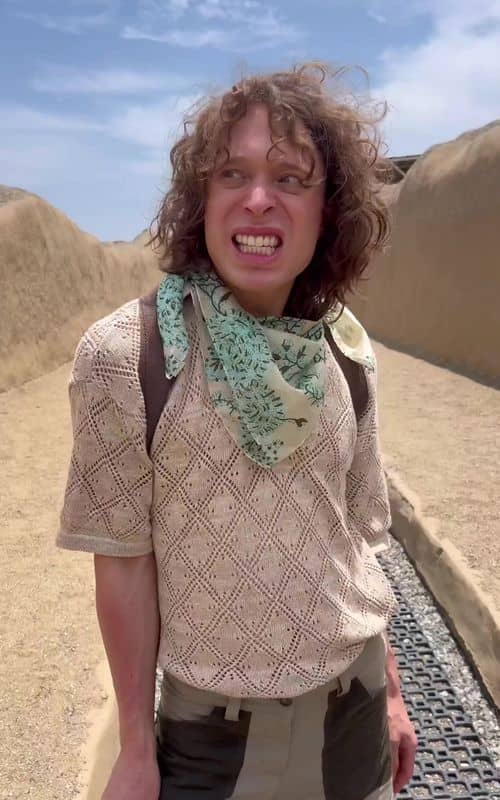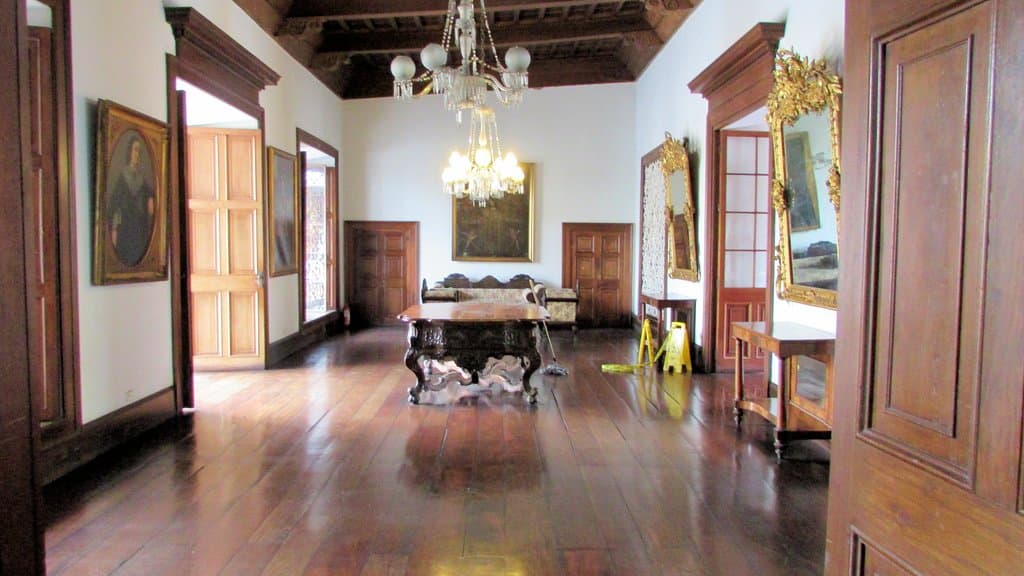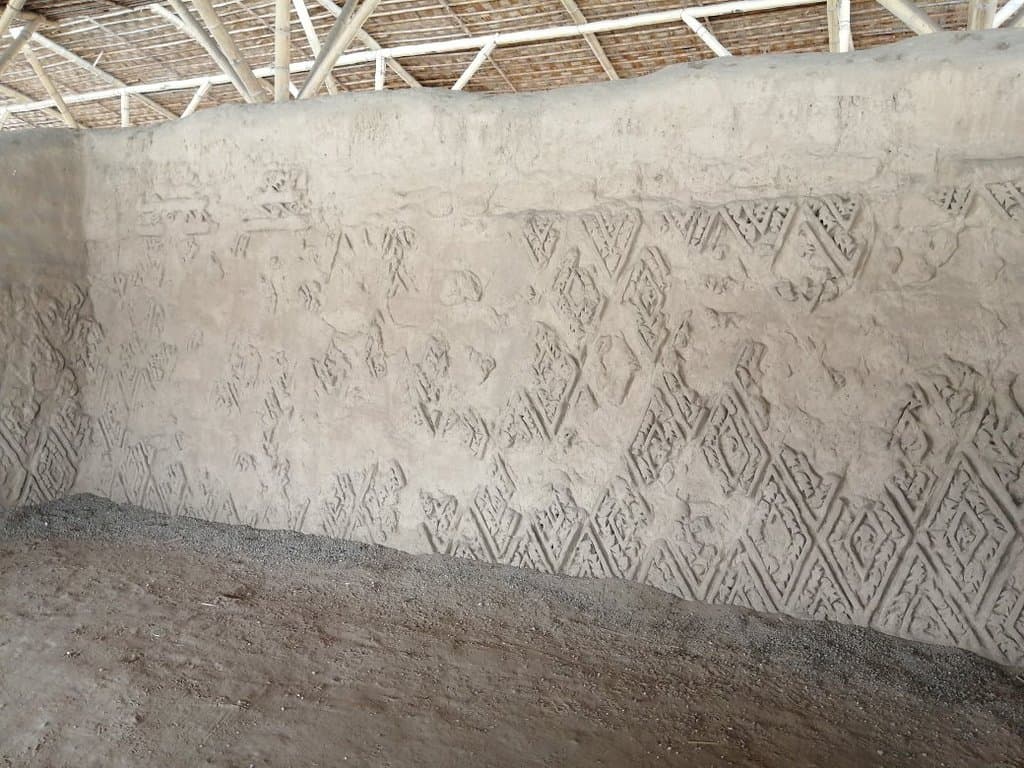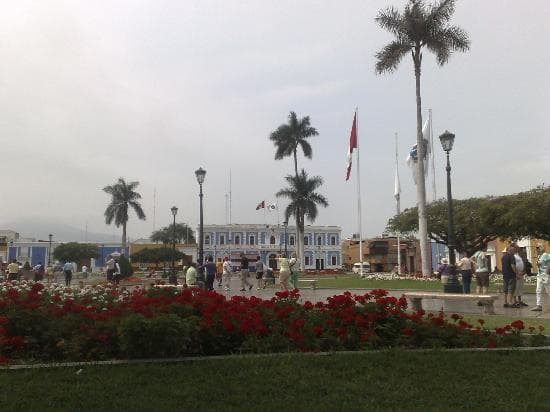Museo de Sitio Chan Chan
Discover the rich Chimu civilization through artifacts and exhibits before exploring the vast adobe city of Chan Chan.
Highlights
Must-see attractions

Social
From TikTok & Reddit
Best Time
Free entry & cultural activities
Museo de Sitio Chan Chan
Best Time
Free entry & cultural activities
Highlights
Must-see attractions
Discover the rich Chimu civilization through artifacts and exhibits before exploring the vast adobe city of Chan Chan.
"Highly recommended to visit before the Chan Chan ruins for better understanding. "
Visit Museum Before Ruins
Essential for understanding Chimu culture & Chan Chan's scale.
Check for Free Entry Days
Look for special dates like anniversaries for free admission.
Highlights
Discover the most iconic attractions and experiences
Chimu Artifacts
Museum Galleries
Discover thousands of ceramic, lithic, metal, and textile pieces from the ancient Chimu civilization.
Chimu Culture Exhibits
Museum Galleries
Gain deep insights into the Chimu culture through well-curated displays and explanations.
Archaeological Site Context
Museum Introduction
Understand the scale and significance of the Chan Chan ruins before you visit them.
Northern Peruvian Garden
Museum Courtyard
Enjoy a peaceful stroll through a garden featuring typical plants of northern Peru.
Plans like a pro.
Thinks like you
Planning Your Visit
Visit the Museum First!
Free Entry Days & Timing
Best Times
Insider Tips
from TikTok, Instagram & Reddit
Visit Museum Before Ruins
Essential for understanding Chimu culture & Chan Chan's scale.
Check for Free Entry Days
Look for special dates like anniversaries for free admission.
Combine with Chan Chan Site
Many tickets include access to both the museum and ruins.
Bring Water & Sun Protection
Peru's coast can be sunny; stay hydrated and protected.
Tips
from all over the internet
Visit Museum Before Ruins
Essential for understanding Chimu culture & Chan Chan's scale.
Check for Free Entry Days
Look for special dates like anniversaries for free admission.
Combine with Chan Chan Site
Many tickets include access to both the museum and ruins.
Bring Water & Sun Protection
Peru's coast can be sunny; stay hydrated and protected.
Consider a Guide
A good guide enhances understanding of the site and artifacts.
What Travellers Say
Reviews Summary
Visitors highly recommend the Museo de Sitio Chan Chan, especially as a precursor to visiting the Chan Chan ruins, noting its recent renovations and informative exhibits in both Spanish and English. While some find it a bit basic, most agree it significantly enhances the understanding of the Chimu culture and the archaeological site.
"I strongly recommend to visit the Chan Can site museum before you go to see the ruins of the city of Chan Chan. The museum is renovated and enlarged with more things from the ruins, and have explanations in both Spanish and English. You will learn a lot about the Chimu culture and you will understand the ruins of Chan Chan so much better. I really enjoyed the new and better version of this museum. Highly recommended!"
Alfhild Halland
"A very nice museum to visit before going to the chan chan site. It included general overview of the site and artefacts excavated from inside. Our guide told us it was recently renovated so it is quite new and nicely curated. It has a pretty garden with a lot of typical and important plants of northern Peru."
Celia Yang
"Great experience, inmense structures, great tour guide. Cesar Castañeda was the best tour guide! Ask for him!"
Luis Perez Cintron
What People Like
What People Dislike
Frequently Asked Questions
🚇 🗺️ Getting There
The Museo de Sitio Chan Chan is located near the archaeological site of Chan Chan, just outside the main city of Trujillo. You can take a taxi or a local bus (combis) from Trujillo's city center. Many visitors combine their visit to the museum with the Chan Chan ruins, so transportation options often cater to both.
Yes, the museum is typically visited in conjunction with the Chan Chan ruins, so taxis and local transport are usually available to take you between the two sites.
While they are close, the distance might be a bit far to walk comfortably, especially in the heat. It's generally recommended to use a short taxi or bus ride between the museum and the main archaeological site.
🎫 🎫 Tickets & Entry
Ticket prices can vary, but often a combined ticket for both the museum and the Chan Chan archaeological site is available for around 10-15 Peruvian Soles. It's advisable to check the official Ministry of Culture website for the most current pricing.
Yes, the museum sometimes offers free admission on special occasions, such as its anniversary or during national cultural celebrations. Keep an eye on local announcements or the Ministry of Culture's social media for these opportunities.
Opening hours can vary seasonally and may be affected by holidays. Generally, museums in Peru operate from morning to late afternoon. It's best to confirm the current hours before your visit on the official Ministry of Culture website or by calling ahead.
For regular visits, advance booking is usually not required, especially if you purchase a combined ticket. However, for special events or free entry days, it's wise to arrive early to ensure entry.
🎫 🏛️ Onsite Experience
The museum houses over 15,000 artifacts, including ceramics, textiles, and metalwork from the Chimu civilization. It provides an excellent overview of their culture and the Chan Chan site itself.
Yes, many exhibits and explanations at the Museo de Sitio Chan Chan are provided in both Spanish and English, making it accessible to international visitors.
To fully appreciate the exhibits and gain a good understanding, allocate at least 1 to 1.5 hours for your visit to the museum.
While not always explicitly advertised, you might be able to arrange for a guide at the museum or hire one who can cover both the museum and the ruins.
Modern renovations often include accessibility features, but it's best to confirm directly with the museum regarding specific facilities for visitors with mobility challenges.
📸 📸 Photography
Photography is generally allowed inside the museum, but flash photography might be restricted to protect the artifacts. Always look for signage indicating photography rules.
The well-preserved artifacts, the informative displays, and the tranquil garden offer great photo opportunities. The contrast between the ancient artifacts and the modern museum setting can be striking.
For Different Travelers
Tailored advice for your travel style
👨👩👧 Families with Kids
To keep younger visitors interested, focus on the most visually striking artifacts and the stories behind them. The garden area can also provide a nice break. Combining the museum visit with the nearby Chan Chan ruins, where kids can imagine life in a vast ancient city, makes for a memorable educational outing.
📚 History Enthusiasts & Students
Students and history buffs will appreciate the detailed explanations and the context provided for the Chan Chan ruins. Visiting the museum before exploring the archaeological site is strongly advised to maximize understanding and appreciation of the Chimu legacy. Look for opportunities to learn about ongoing research and conservation efforts related to the site.
Deep Dives
In-depth insights and expert knowledge
Understanding the Chimu Civilization
Visitors often find that seeing the artifacts first, such as the detailed ceramics and textiles, provides a much deeper appreciation for the scale and complexity of the Chan Chan archaeological site. The museum's exhibits explain the social hierarchy, the importance of the sea for their sustenance, and their advanced understanding of astronomy and engineering.
It's highly recommended to visit the museum before heading to the ruins. This approach ensures you grasp the historical context and significance of what you'll see at Chan Chan, transforming a walk through ruins into an insightful journey through history.
The Museum's Role in Preservation
Recent renovations have enhanced the museum's capacity to display these treasures, offering clearer explanations and a more engaging visitor experience. The museum also serves as an educational hub, raising awareness about the importance of cultural heritage and the ongoing efforts to conserve these ancient sites for future generations.
Beyond the artifacts, the museum grounds often feature a garden showcasing the native flora of northern Peru, adding another layer to the visitor's understanding of the region's natural environment and its historical relationship with human settlements.




Social
from TikTok, Instagram & Reddit